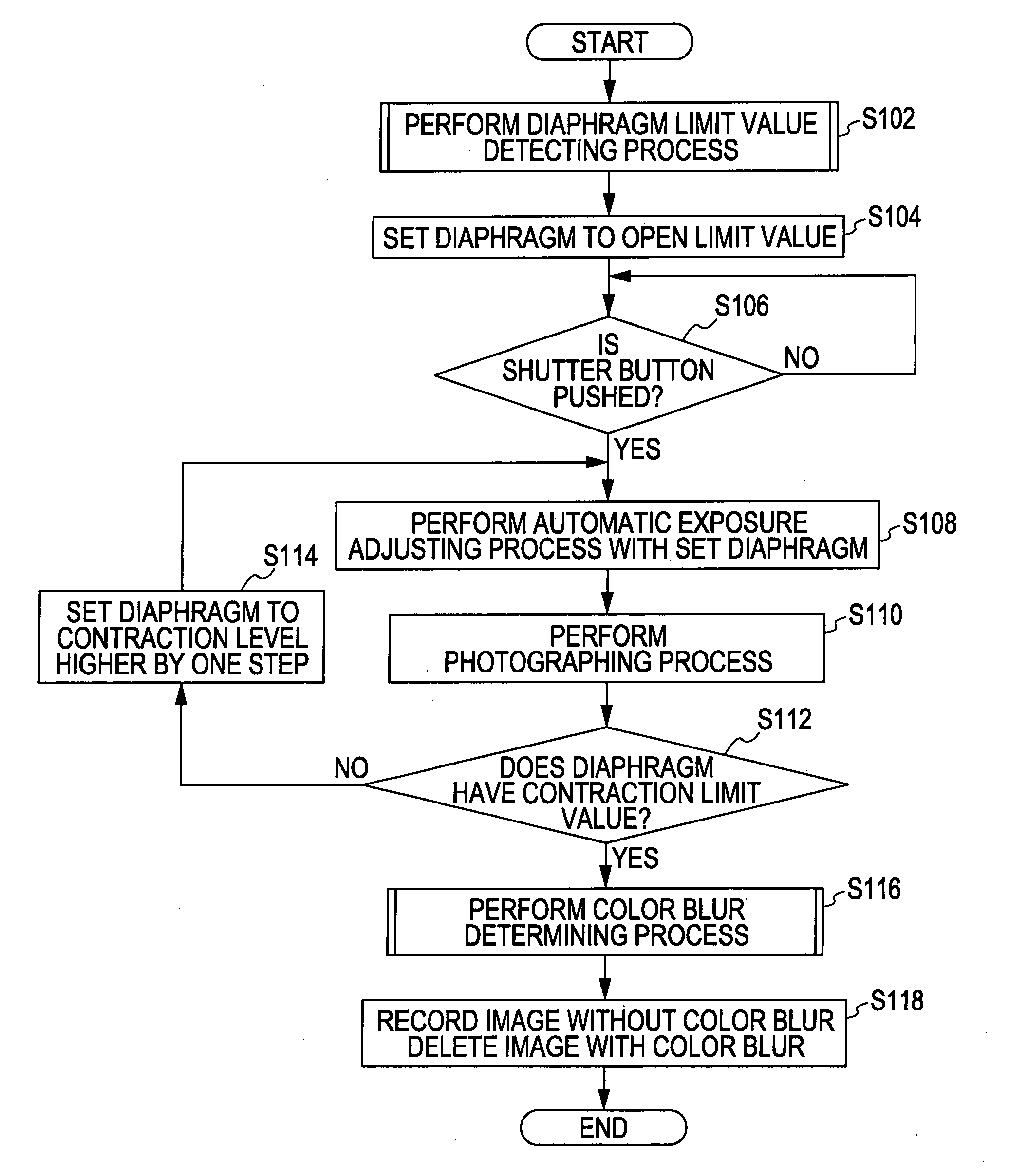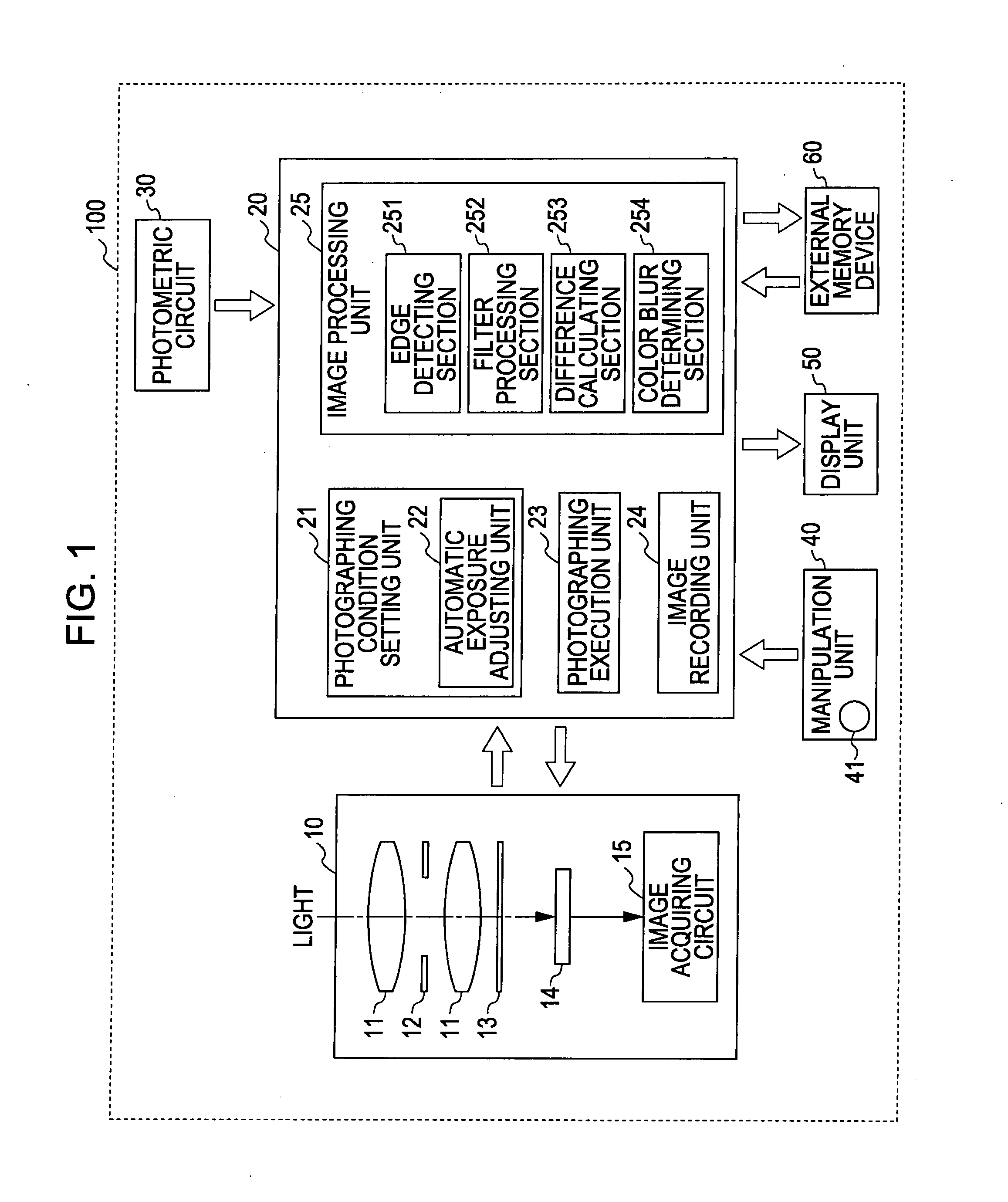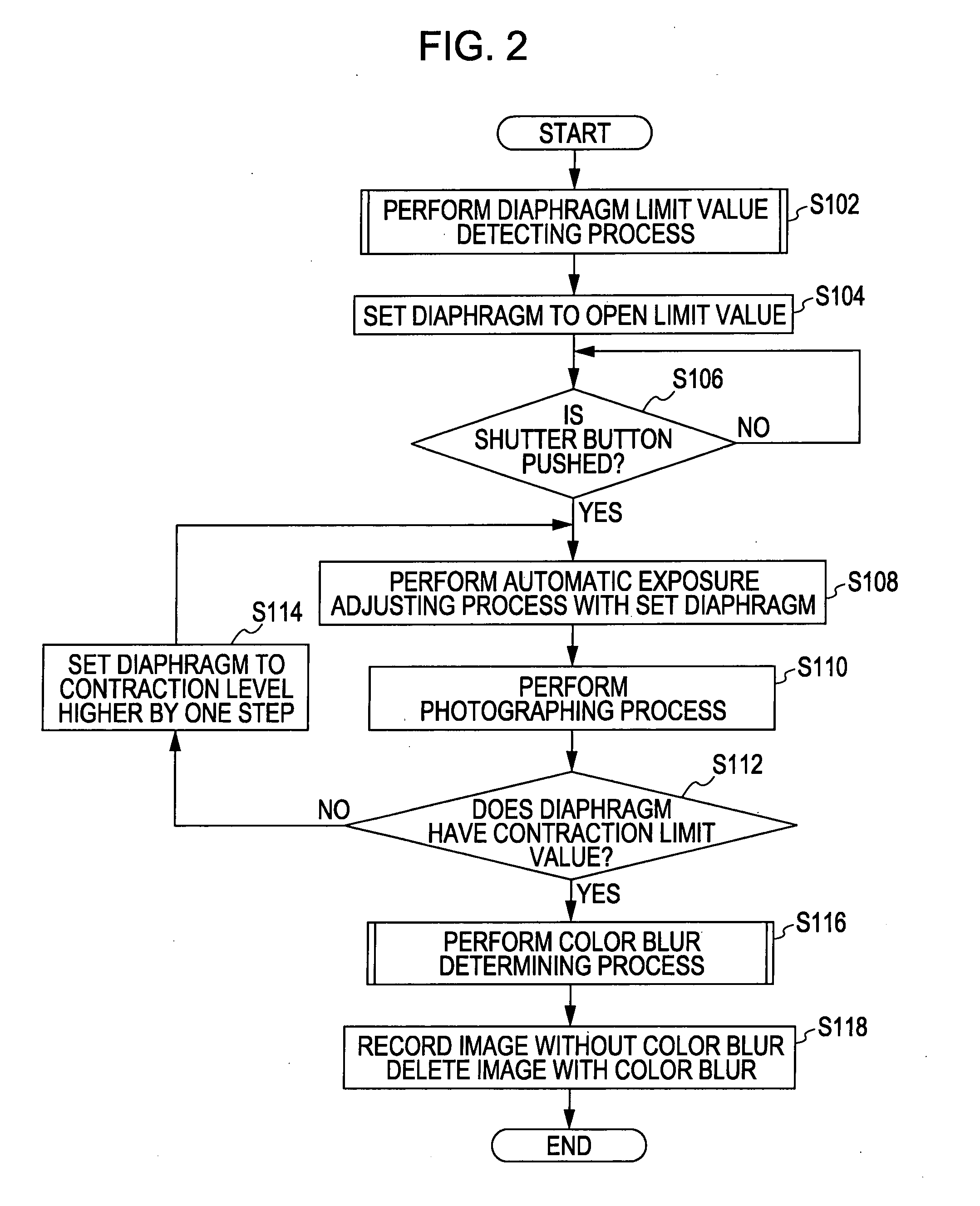Imaging device and image acquiring method
- Summary
- Abstract
- Description
- Claims
- Application Information
AI Technical Summary
Benefits of technology
Problems solved by technology
Method used
Image
Examples
first embodiment
A. First Embodiment
Configuration of Device
[0037] Next, an embodiment of an invention will be described. FIG. 1 is a schematic view illustrating a digital camera as an imaging device according to a first embodiment.
[0038] A digital camera 100 includes a photographing unit 10, a control unit 20, a photometric circuit 30 which measures the brightness of a subject, a manipulation unit 40, a display unit 50 such as a liquid crystal, and an external memory device 60.
[0039] The photographing unit 10 actually photographs and outputs image data generated after photographing to a control unit 20. The photographing unit 10 includes a lens 11, a diaphragm mechanism 12, a shutter 13, an image sensor 14, and an image acquiring circuit 15. The lens 11 collects light from the subject to a light-receiving surface of the image sensor 14 so as to form an image of the subject on the light-receiving surface of the image sensor 14. The diaphragm mechanism 12 is a mechanism which adjusts the amount of...
second embodiment
B. Second Embodiment
[0081] In the first embodiment, the color blur determining process is performed in the digital camera 100, but it is not limited to the digital camera. For example, the image processing unit 25 performing the color blur determining process may be mounted to a personal computer or to a print device such as an inkjet printer. With reference to FIGS. 8 to 10, an embodiment mounting the image processing unit 25 which performs the color blur determining process to a personal computer will be explained as a second embodiment. FIG. 8 is a schematic flowchart of the second embodiment. FIG. 9 is a flowchart illustrating an operation of the digital camera according to the second embodiment. FIG. 10 is a flow chart illustrating an operation of a personal computer according to the second embodiment.
System Configuration
[0082] A system of the second embodiment includes a digital camera 100b and a personal computer 200. In the second embodiment, the control unit 20 of the di...
first modified example
[0091] With reference to FIG. 11, an operation of the digital camera 100 according to a first modified example will be described. FIG. 11 is a flow chart illustrating the operation of the digital camera 100 according to the modified example. Since steps s402 to s406 of the modified example are similar to steps s102 to s106 (FIG. 2) of the first example, the descriptions thereof will be omitted. In step s406, when the user pushes the shutter button 41 so as to input the photographing instruction (step s106: YES), the automatic exposure adjusting unit 22 performs the automatic exposure adjusting process by using the aperture which is set to the open limit state (step s408). Accordingly, ISO sensitivity and the shutter speed are determined so that the aperture is set to the open limit. When the automatic exposure adjusting ends, the photographing execution unit 23 performs the photographing process to the photographing unit 10 in accordance with the determined photographing modes (aper...
PUM
 Login to View More
Login to View More Abstract
Description
Claims
Application Information
 Login to View More
Login to View More - R&D
- Intellectual Property
- Life Sciences
- Materials
- Tech Scout
- Unparalleled Data Quality
- Higher Quality Content
- 60% Fewer Hallucinations
Browse by: Latest US Patents, China's latest patents, Technical Efficacy Thesaurus, Application Domain, Technology Topic, Popular Technical Reports.
© 2025 PatSnap. All rights reserved.Legal|Privacy policy|Modern Slavery Act Transparency Statement|Sitemap|About US| Contact US: help@patsnap.com



